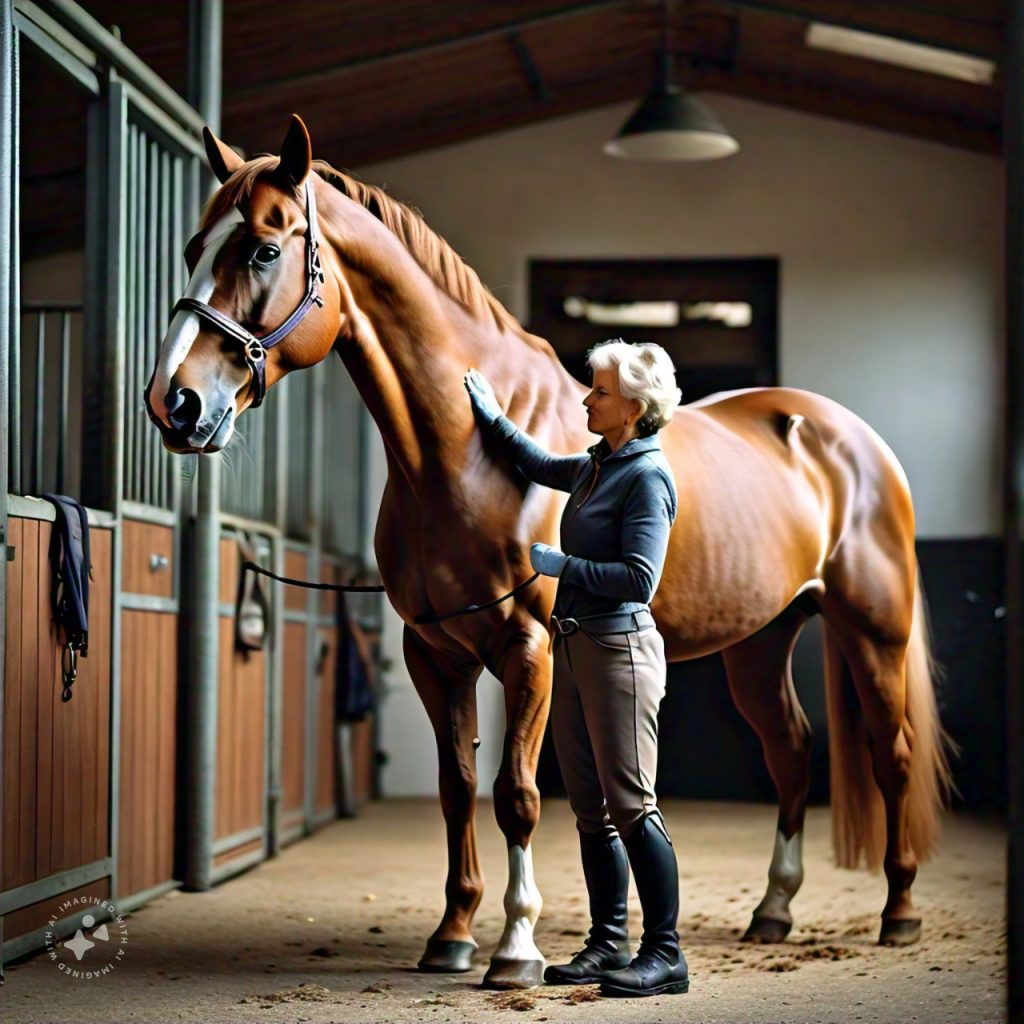What is Conjunctivitis in Horses?
Conjunctivitis in horses is an inflammatory response of the conjunctiva to irritants, infections, or other underlying health issues. While it’s generally not life-threatening, untreated conjunctivitis can lead to severe discomfort and potential complications, such as corneal ulcers or impaired vision.
Common Causes of Conjunctivitis in Horses
The causes of conjunctivitis in horses are diverse and can be broadly categorized into infectious and non-infectious origins:
1. Infectious Causes
- Bacterial Infections
Bacteria like Staphylococcus and Streptococcus species are common culprits. These infections often result from environmental contamination or compromised immunity. - Viral Infections
Viruses, including equine herpesvirus (EHV), can lead to conjunctivitis as part of systemic infections. - Parasitic Infections
Parasites such as Habronema larvae or Onchocerca species may cause eye irritation and inflammation.
2. Non-Infectious Causes
- Allergies
Horses may develop conjunctivitis due to allergens like pollen, dust, or mold. - Environmental Irritants
Wind, debris, and exposure to harsh sunlight can irritate the eyes, leading to conjunctival inflammation. - Trauma
Physical injuries from branches, fencing, or other objects can damage the conjunctiva and cause inflammation. - Autoimmune Disorders
In rare cases, autoimmune diseases may manifest in the eyes, leading to chronic conjunctivitis.
Symptoms of Conjunctivitis in Horses
Early detection of conjunctivitis is crucial to prevent further complications. Look out for the following symptoms:
- Redness of the conjunctiva
- Swelling around the eyes
- Discharge, which may be clear, yellow, or green
- Squinting or reluctance to open the eye
- Rubbing of the eye against objects or with the hoof
- Sensitivity to light (photophobia)
- Tearing or excessive watering of the eye
Diagnosis of Conjunctivitis in Horses
A veterinarian’s assessment is essential for accurately diagnosing conjunctivitis and its underlying cause. The diagnostic process may include:
- Physical Examination
The vet inspects the eye for visible signs of trauma, foreign bodies, or irritation. - Fluorescein Staining
This test checks for corneal ulcers or scratches by applying a fluorescent dye. - Cytology and Culture
Samples of ocular discharge may be examined under a microscope or cultured to identify bacteria, fungi, or parasites. - Allergy Testing
In cases of recurrent conjunctivitis, allergy testing may be necessary.
Treatment Options for Conjunctivitis in Horses
Treatment depends on the underlying cause but typically includes the following approaches:
1. Medications
- Antibiotics
Topical or systemic antibiotics are prescribed for bacterial infections. - Anti-Inflammatory Drugs
Steroid or non-steroidal anti-inflammatory eye drops reduce swelling and discomfort. (Note: Steroids are contraindicated if corneal ulcers are present.) - Antihistamines
These may be used for allergy-induced conjunctivitis. - Antiparasitic Treatments
Deworming or specific antiparasitic medications are required for parasitic infections.
2. Supportive Care
- Eye Flushing
Flushing the eye with saline solution removes debris and soothes irritation. - Protective Measures
Use fly masks or shields to protect the eyes from flies, dust, and debris.
3. Addressing the Environment
- Maintain a clean and dust-free stable.
- Manage allergens and irritants in the horse’s environment.
Preventing Conjunctivitis in Horses
Prevention is always better than cure. Implement these strategies to minimize the risk of conjunctivitis:
- Hygiene and Stable Management
- Keep the stable clean and well-ventilated.
- Remove manure and control flies effectively.
- Regular Eye Checks
- Inspect your horse’s eyes daily for signs of redness, swelling, or discharge.
- Fly Control
- Use fly repellents and masks to protect your horse from insect bites.
- Proper Grooming
- Clean around the eyes with a damp, soft cloth to remove dirt and debris.
- Prompt Medical Attention
- Address eye injuries and irritation immediately to prevent secondary infections.
When to Call the Vet
Conjunctivitis may require immediate veterinary intervention in the following cases:
- Persistent or worsening symptoms despite treatment
- Yellow or green discharge indicating infection
- Signs of pain, such as constant squinting or rubbing
- Suspected trauma or foreign objects in the eye
Key Takeaways
Conjunctivitis in horses, while common, should not be overlooked. Prompt identification and treatment are vital to prevent complications. By maintaining a clean environment, addressing eye issues promptly, and seeking veterinary care when necessary, horse owners can ensure their equine companions remain healthy and comfortable.
FAQs about Conjunctivitis in Horses
Q1: Can conjunctivitis spread between horses?
Yes, infectious conjunctivitis caused by bacteria or viruses can spread through direct contact or shared equipment.
Q2: Is conjunctivitis in horses seasonal?
It can be more common in warmer months due to increased allergens and fly activity, but it can occur year-round.
Q3: Can humans catch conjunctivitis from horses?
Most cases of equine conjunctivitis are not zoonotic, but it’s essential to practice good hygiene when handling an infected horse.
By staying informed and proactive, horse owners can effectively manage and prevent conjunctivitis, ensuring their horses’ well-being.

